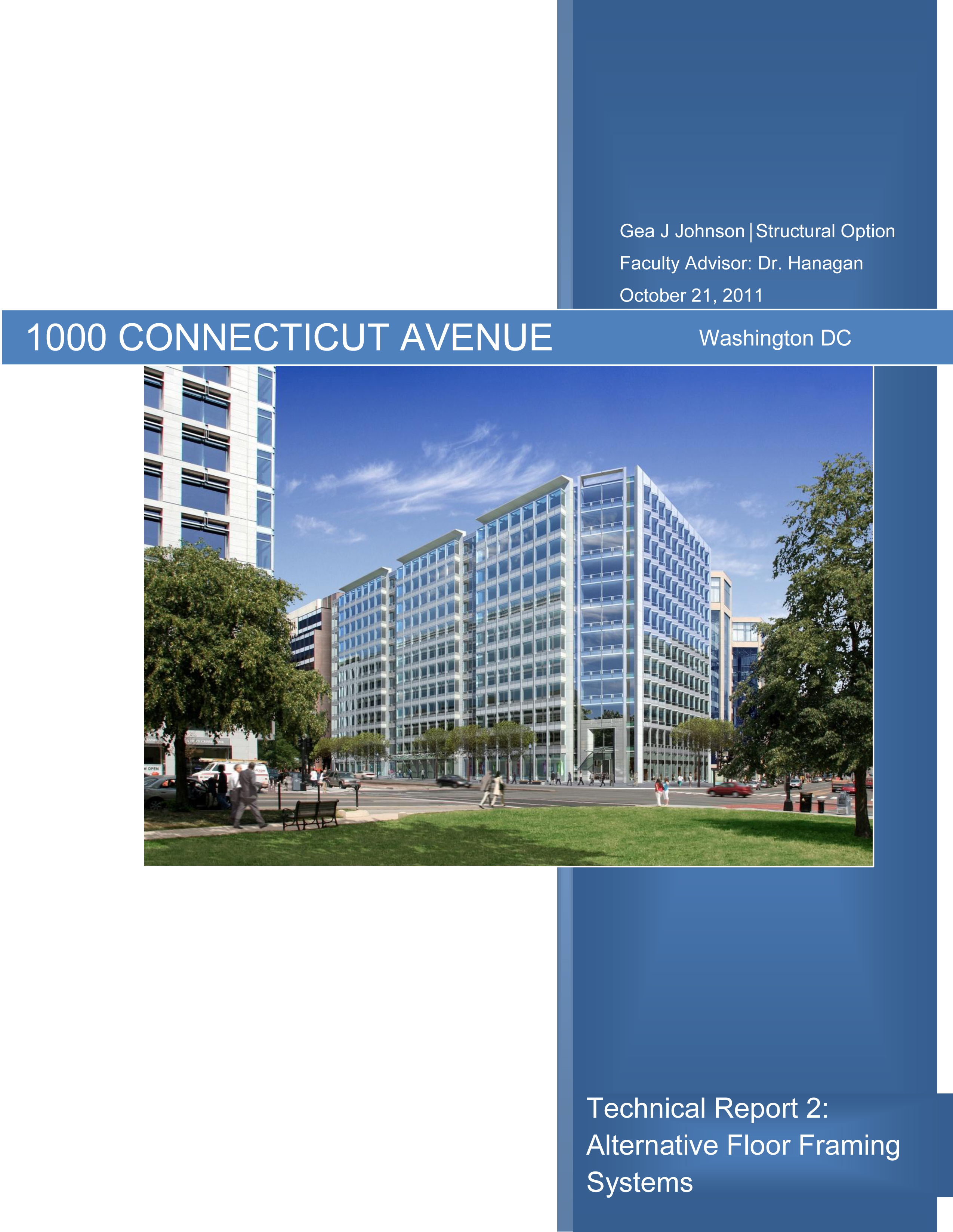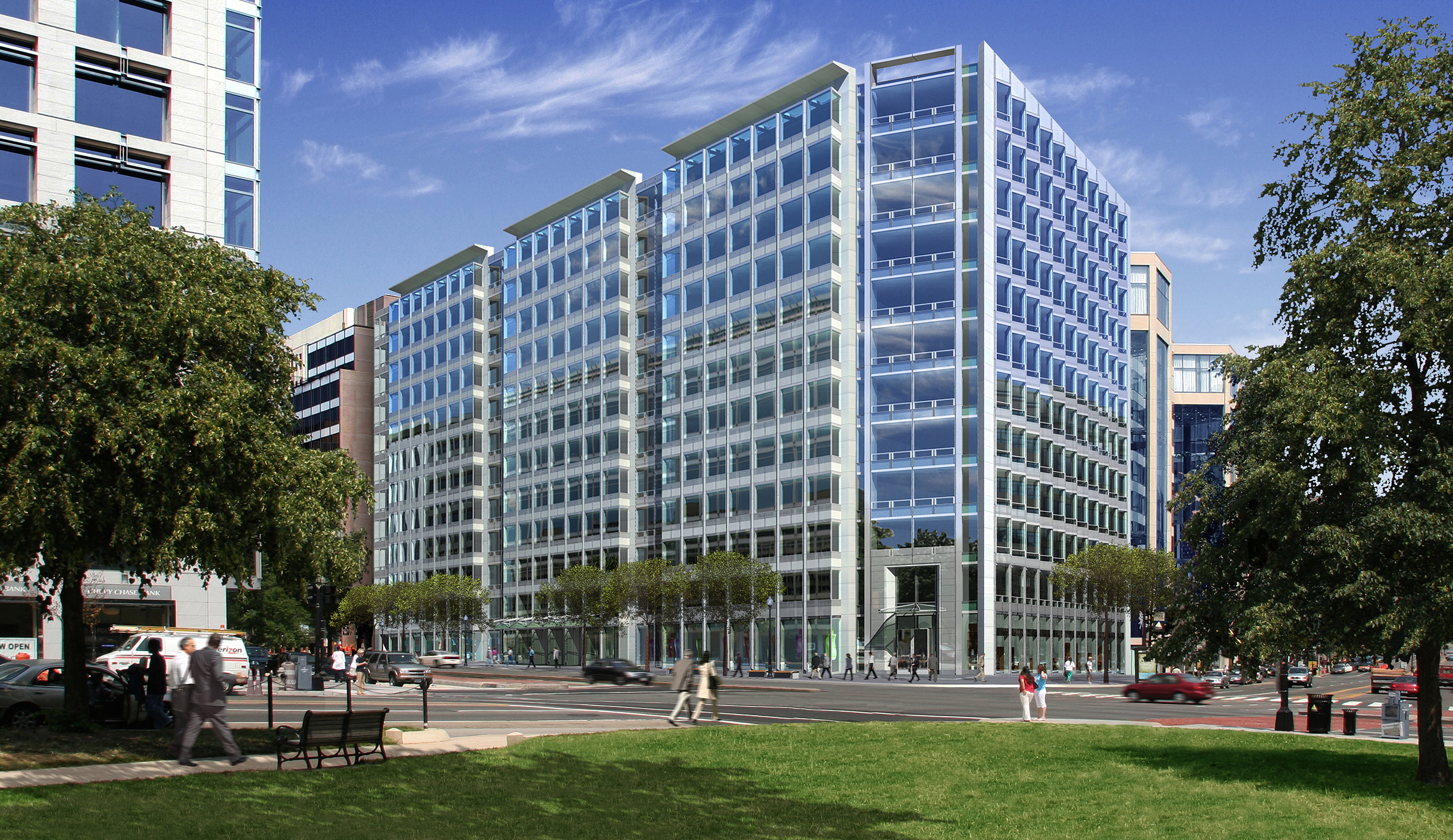

| Note: While great efforts have been taken to provide accurate and complete information on the pages of CPEP, please be aware that the information contained herewith is considered a work‐in progress for this thesis project. Modifications and changes related to the original building designs and construction methodologies for this senior thesis project are solely the interpretation of Gea Johnson. Changes and discrepancies in no way imply that the original design contained errors or was flawed. Differing assumptions, code references, requirements, and methodologies have been incorporated into this thesis project; therefore, investigation results may vary from the original design. | ||||
This page was last Updated on 12/16/2011 by Gea Johnson and is hosted by the AE Department © 2012 |
||||
1000 CONNECTICUT AVENUE, NW OFFICE BUILDING |
||||
WASHINGTON DC |
||||
|
||||
Technical Report 2 is a study of 1000 Connecticut Avenue's existing floor system in addition to three alternative floor systems which were designed for this report. Each system's feasibility was determined by addressing fire protection and fire ratings, durability, weight, vibration control, structural depth, and cost. The existing floor system is a two-way flat slab and the three alternative systems chosen for design were the following:
-Composite Beam and Girder Framing with Composite Steel Deck
-Two-way Post-Tension Slab
- Composite Joist and Steel Girder Framing with Composite Steel Deck
Technical Report 3 is an analysis of 1000 Connecticut Avenue's existing lateral system. The existing lateral system consists of concrete moment frames, where the two-way flat slab floor system and concrete columns form the moment frames. To complete the lateral system analysis, wind and seismic loads were calculated, and the wind load case 1 was found to control in the North-South direction and seismic loads were found to control in the East-West direction. Further, the report analyzed the distribution of story lateral forces to the moment frames, overturning and resisting moments, building torsion, and lateral displacements and story drifts were compared to allowable code limits.